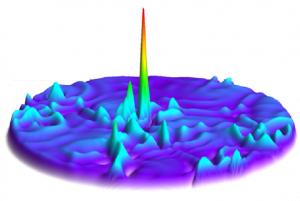Computational methods are at the base of some of the most important discoveries in modern physics and science. Good historical examples are the origin of chemical pattern formation (Turing, 1952), the breaking of the equipartition of energy (Fermi, Pasta, Ulam and Tsingou, 1955) and chaotic dynamics (Lorentz, 1963).
We apply numerical techniques to solve partial differential equations that accurately describe the spatio-temporal dynamics of photonic devices where light couples with the medium through quantum interactions. Typical quantum and nonlinear photonic devices are lasers, Kerr and four-wave mixing materials, saturable absorbers, optical parametric oscillators, multi-level media, cold and ultra-cold atomic gases in optical cavities or with feedback mirrors.
The CNQO group has pioneered the theory and simulation of transverse pattern formation in photonic devices where the coupling of optical nonlinearity with diffraction and dispersion lead to the breaking of the translational symmetries and to the formation of spatially periodic structures [1]. When these periodic structures are simultaneously stable with a homogeneous state, the CNQO group predicted the appearance of dissipative solitons, where self-focusing is counterbalanced by diffraction or dispersion. Optical patterns and cavity solitons were later observed in liquid crystal devices, lasers, optical parametric oscillators, second harmonic generators, cold atomic clouds and fibre lasers.
Current Research Topics
- Kerr and micro-ring resonators. Frequency combs
- Solid-state, gas, fibre and semiconductor lasers, VCSELs
- Three level media and optical parametric oscillators
[1] T. Ackemann, W. J. Firth and G.-L. Oppo, Fundamentals and applications of spatial dissipative solitons in photonic devices, Adv. Atom. Mol. Opt. Phys. 57, 323-421 (2009).